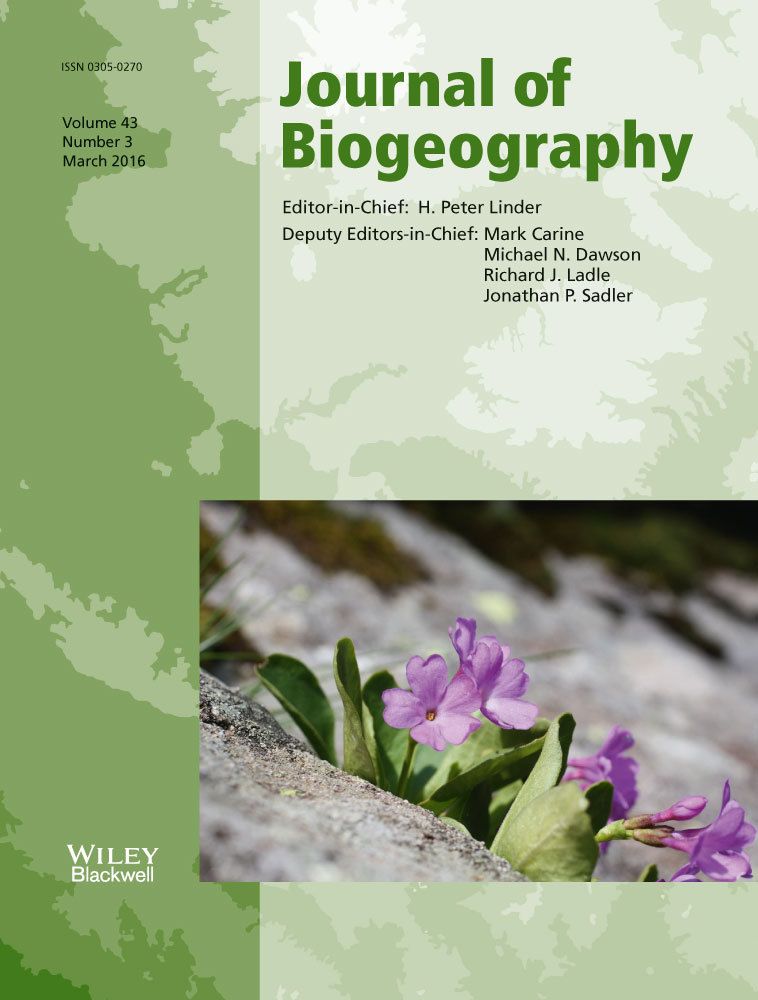Oligarchic patterns in tropical forests: role of the spatial extent, environmental heterogeneity and diversity
Abstract
Aim
Oligarchic patterns can vary from weak (i.e. little difference between rare and common species) to strong (i.e. a set of dominant species is immediately evident). Our aim was to understand the relationships between the strength of the oligarchic patterns, diversities (alpha, beta and gamma), and five potential causes (elevational variability, soil heterogeneity, elevation, soil conditions and geographical extent).
Location
The Amazon–Andes transition in the Madidi region (Bolivia).
Methods
We established 398 plots of 0.1 ha each, containing 121,183 individual woody plants belonging to 2390 species. Then we defined 500 sub-regions (= unique overlapping subsets of 50 plots from the pool of 398 plots) so they varied in extent from 220 to 17,700 km2 within the study area. We employed two independent path analyses to relate environmental characteristics and geographical extent of sub-regions to (1) oligarchic strength and (2) alpha, beta and gamma diversities. We used generalized linear models to relate diversities to different measures of oligarchic strength.
Results
Oligarchies at larger extents were weaker, a trend strongly driven by the pure effect of area and, secondarily, by environmental heterogeneity. Oligarchies at higher elevations were weaker than expected, and oligarchies in acidic and nutrients-poor soils were not stronger than those in less stressful soils. Trends in oligarchic strength were inversely correlated with those of gamma and beta diversity: weaker oligarchies were found in species-rich and heterogeneous communities.
Main conclusions
Environmental heterogeneity and low landscape connectivity limit the strength of the oligarchic pattern. Although diversities (particularly beta diversity) and oligarchic strength are closely related, they are somewhat differently driven by external factors. In particular, oligarchic strength is more sensitive to spatial extent and less sensitive to environmental heterogeneity than beta diversity. Finally, the study of oligarchic patterns should consider a priori expectations based on species richness and turnover.




